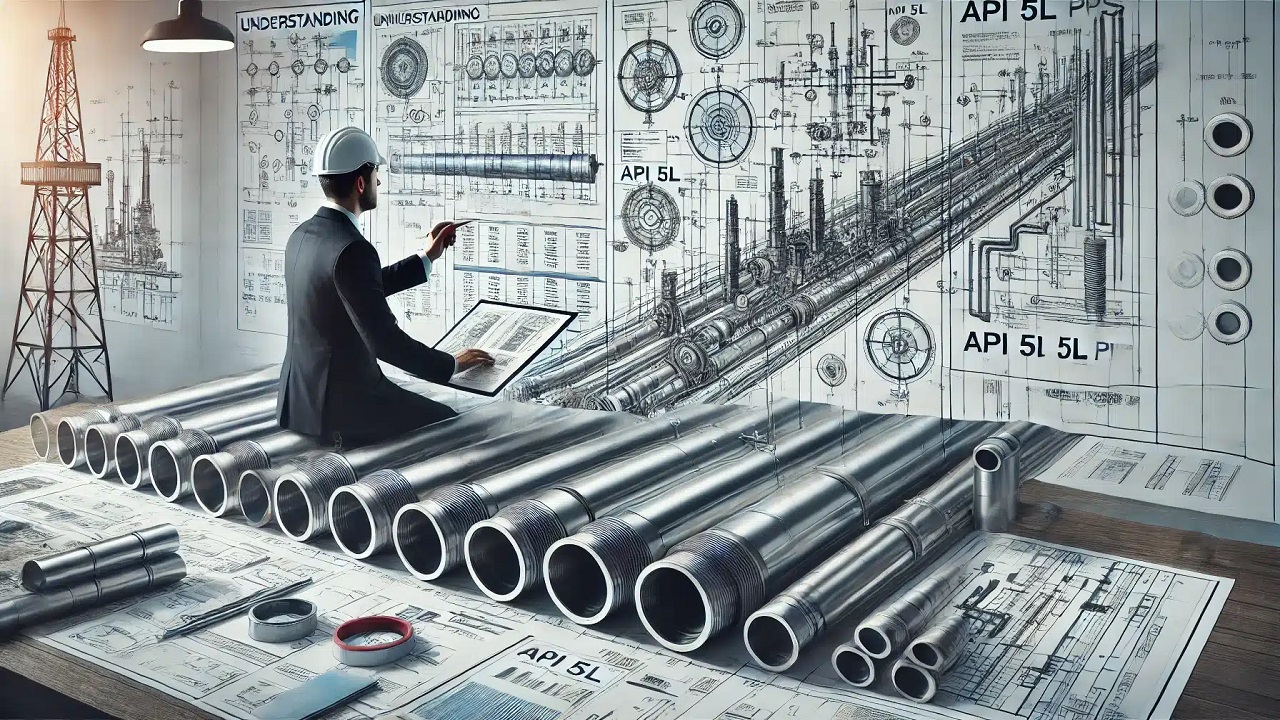People are demanding reliable and efficient energy infrastructure, which has never been greater due to the global trend toward the usage of renewable energy sources. Several renewable energy projects are now utilizing conventional pipeline materials, like API 5L pipes, which were first employed for the transfer of gas and oil. The purpose of API 5L Pipe Standards-PSL 1,2 is to make sure, these pipes are of suitable materials, that are used in renewable energy sectors including wind, solar, and bioenergy is the main topic of this article.
Overview of API 5L Pipes
People in the business know that API 5L pipes are produced following the American Petroleum Institute's requirements and are widely regarded as pipe specifications for the transportation of natural gas and oil. They are available in a variety of grades that satisfy different environmental and pressure requirements.
Wind Energy Applications
API 5L pipes find application in the wind energy sector in several capacities, mainly for constructing the foundation & tower aspects of a wind energy plant.
Foundation Structures
Wind turbines need solid support structures to ensure both stability and probable security. API 5L pipes may also be incorporated as a part of the foundation system to afford the structure the necessary resistance to the loads borne by it from the wind, as well as the load of the turbine system.
Tower Construction
It is also important to note that API 5L pipes can be also used in the fabrication of wind turbine towers. Due to their high yield strength, new towers can be made lighter and stronger, which helps to save on material expenses and transportation and installation processes. This is especially the case given that in remote regions where access to heavy equipment is not easily accessible.
Solar Energy Applications
This is another aspect where API 5L pipes have been useful, particularly to manufacturers of pipes for solar farm construction.
Support Structures
Like most structures, solar panels need some form of support on which they will stand and be fixed to ensure they are properly placed for efficiency. Being tubular, API 5L pipes are occasionally utilized to support the structure by framing or mounting to which the solar panels are fastened. One more feature of the materials is high corrosion properties which are beneficial in outdoor conditions when moisture decreases the durability of other materials.
Heat Transfer Systems
In concentrated solar power (CSP) systems, API 5L pipes may be applied in heat transfer systems that carry heated fluids. Since the materials that form pipes have high heat and pressure tolerance, energy transfer is also effective in CSP which is advantageous to the technology.
Bioenergy Applications
API 5L pipes are also used in the production of energy from organic materials in the bioenergy sector.
Biogas Transport
In biogas projects, organic waste is transformed into renewable gas, and API 5L pipes are used to transport biogas from production centers or chemical works to purification facilities, or consumers. The pipes are also resistant to corrosion and degradation by the acidic nature of the biogas making them suitable for this use.
Biomass Conveying
Further, API 5L pipes may be used where biomass materials are transported to the processing facilities. They are durable enough to withstand the rigorous use that comes with the transportation of solid materials in biomass energy generation. That is why in the present article, several key advantages of API 5L pipes for the renewable energy industry are outlined.
API 5L Pipes in Renewable Energy Projects Offers Several Advantages
Durability and Longevity API 5L pipes are manufactured to endure tough environments and therefore few replacements and repairs are required.
Cost-Effectiveness
The durability and reliability of these pipes can result in reduced cost of construction and reduced cost of maintenance.
Versatility
Due to their versatility, API 5L pipes are a useful commodity in different renewable energy industries.
Sustainability
The application of existing technologies in the energy sector in an innovative way supports the global objectives of introducing more sustainable approaches to industry.
Conclusion
API 5L pipes which were originally designed for the oil and gas sector are becoming highly useful in the renewable energy segment. For wind and solar projects as well as bioenergy applications these pipes offer the necessary strength as well as an enduring and multifaceted application. Since the shift towards fully utilizing renewable sources of energy is gradually becoming evident and active, the application of API 5L pipes will also grow as part of the energy transformation. These pipes depict how such traditional resources can be utilized to support fresh and sustainable concerns in the renewable power industry.


